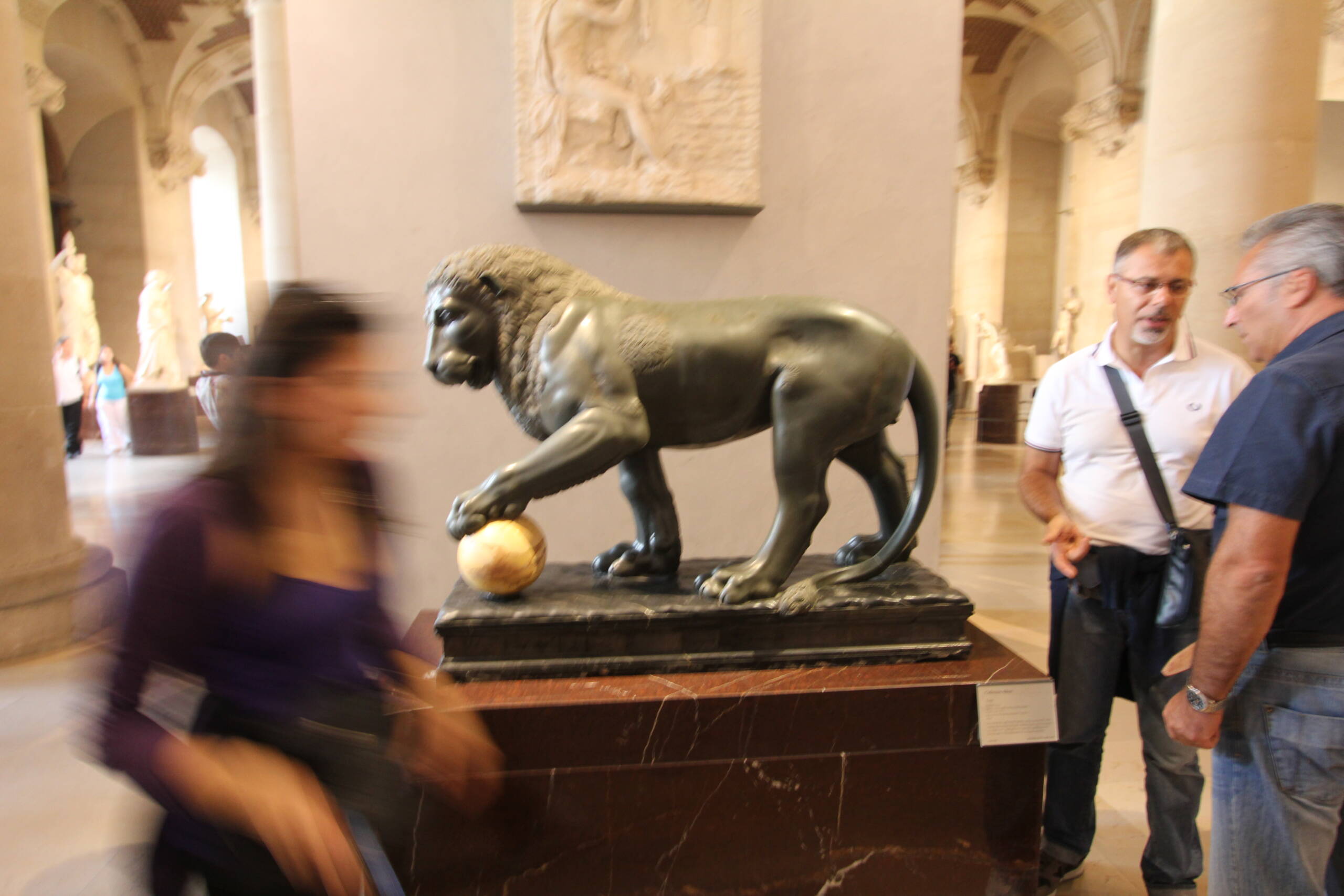Walking through the Louvre, one stumbles upon masterpieces not only from antiquity but also from later centuries when European collectors brought home treasures that blended the classical spirit with Renaissance and Baroque ambitions. Among these is the famous Albany Lion, a bronze sculpture modeled after ancient prototypes but forever tied to the legacy of the Duke of Albany, a member of the powerful Medici family. This lion, one of a pair, epitomizes the Renaissance revival of antiquity—its pose derived from classical Roman statuary, its form reshaped by Florentine sculptors of the seventeenth century who sought to embody strength, vigilance, and dynastic power. With its paw firmly planted on a polished orb, the lion does not merely resemble an animal of flesh and blood, but becomes a symbol of dominion, of order held against chaos, of a ruling family’s claim to power.

The Albany Lion is a descendant of the long tradition of so-called Medici lions, which were displayed at the Villa Medici in Rome and later became emblems of Florentine might. The lions were not just decorative sculptures; they were declarations of political authority, cultural sophistication, and continuity with the grandeur of antiquity. They stood watch over gardens and palaces, not unlike sentinels in bronze and stone, embodying both natural ferocity and civic guardianship. The version in the Louvre, brought from the collections of the Duke of Albany, maintains this duality: at once a naturalistic depiction of a lion, its mane rippling with stylized curls, and a carefully crafted allegory of control and vigilance.
In the photograph, this heavy symbolism finds an almost whimsical counterpoint. The lion, unflinching and eternal, stands rooted in bronze, its paw asserting dominance over the globe. Yet to its left, a visitor blurs into motion, her form streaked into abstraction by the camera’s shutter. She becomes pure transience, a fleeting trace of modern life gliding past the ancient power of empire. On the right, two men lean into conversation, faces intent with curiosity, engaged in the very act the sculpture demands: interpretation.
What makes this moment extraordinary is precisely the contrast. The Albany Lion is about permanence, about the weight of dynasties and symbols. The blurred figure is about impermanence, about how visitors move through history’s vast halls, sometimes too quickly to notice. And the two men represent the middle ground: the human attempt to anchor meaning between the eternal and the fleeting.
The Louvre, with its endless corridors and overwhelming collection, often leaves one disoriented, unsure of where to look or what to absorb. But moments like this transform the museum into a living dialogue. The Albany Lion stands as it has for centuries, a sentinel of power, while visitors blur and whisper and pass by. The sculpture remains, the people change—and yet together they create the living theater of the museum.
Leave a Reply